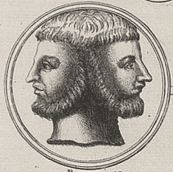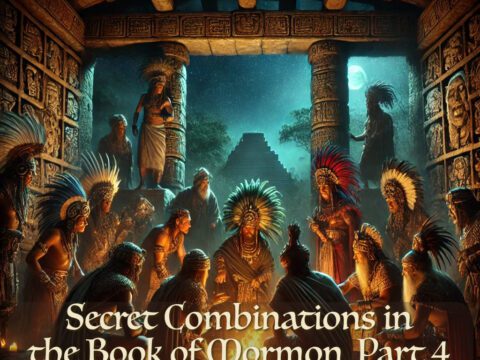After a long trip from Shanghai to Amsterdam via Dubai yesterday, I awoke this morning with an intriguing question sent from Ryan Larsen, a fellow member of the Church and an intriguing researcher who has a knack for looking at details related to the LDS scriptures in interesting new ways. He wondered if it might be possible that more of the original Egyptian papyri from Joseph Smith’s collection may have survived. His question comes from a puzzling statement attributed to Joseph Smith III indicating that his uncle William Smith sold the papyri and mummies (or could it be just part of the collection that he had access to?) years before Emma’s second husband, Lewis Bidamon, allegedly sold the whole collection papyri to Abel Combs. The latter sale is described by John Gee on p. 6 of his Introduction to the Book of Abraham:
On May 26, 1856, less than two weeks after Lucy Mack Smith died, Emma Smith (Joseph’s widow), her second husband (Lewis C. Bidamon), and her son Joseph Smith III sold the mummies and the papyri to a man named Abel Combs. Abel Combs split up the papyri. Some he sold to the St. Louis Museum, including at least two of the rolls and at least two of the mummies; some of the mounted fragments he kept. The St. Louis Museum sold the rolls and mummies to Colonel Wood’s Museum in Chicago. Wood’s Museum burned down in the Chicago Fire of 1871, and presumably the papyri and mummies were destroyed with it.
Ryan found the statement that follows from Joseph Smith III in an unlikely source, “Smithianity; … OR … Mormonism Refuted by Mormons, Part II,” by R. B. Neal, Grayson, Ky., 1899, made available at OliverCowdery.com where it is listed under “Anti-Mormon Tracts, No. 4.” I don’t see this letter cited or mentioned in any other source, causing me to wonder if it is real, but I can see no gain for the anti-Mormon cause achieved by fabricating such a letter. Do any of you have further insights on this document? It may be a late recollection and Joseph Smith III may be conflating the Egyptian materials he saw in Chicago before the fire of 1871 with those that he believed William Smith had sold (but it is possible that scrolls allegedly sold by William Smith and those sold by Abel Combs all ended up in the Woods Museum in Chicago). The purported sale by William Smith would have taken place when Joseph Smith III was about 14 years old, if I understand correctly, and thus, as Ryan puts it, he would have been old enough to know what was going on.
Here’s the letter quoted by R.B. Neal:
PRESIDENT SMITH’S STATEMENT.
Bro. Herman C. Smith: In compliance with your request, the papyrus from which the Book of Abraham was said to have been translated by father, was, with other portions, found in a roll with some Egyptian mummies, pasted upon either paper or linen, and put into a small case of flat drawers, some dozen or sixteen in number. This case, with two cases of mummies, containing five persons, one much smaller than the others, were in the keeping of Grandmother Lucy Smith, father’s mother, for some time before father’s death, and were still in her possession both at the time he was killed and after. She then took them from our house, some time after father’s death, and had them at her daughter’s, Lucy Milliken’s, when they moved into Knox County, Ill., not far from Galesburg. I can not give you dates, but during a part of 1846-47 mother and family were away from Nauvoo, and grandmother was at Lucy Milliken’s. Grandmother finally came back to Nauvoo with Lucy’s family, but came back without the mummies and case of drawers. We learned that while living near Galesburg, Uncle William undertook a lecturing tour and secured the mummies and case of records, as the papyrus was called, as an exhibit and aid to making his lectures more attractive and lucrative.
Uncle William became stranded somewhere along the Illinois River, and sold the mummies and records with the understanding that he might repurchase them. This he never did.
Part of the stock, one case of mummies, and part, or all, of the case of drawers, found their way to Wood’s Museum, Chicago, and a part to St. Louis — where, we never learned.
I, personally, in company with Elder Elijah Banta, of Sandwich, Ill., saw the mummies and case of drawers in the museum in Chicago, before the great fire in 1871, in which they undoubtedly perished, with the rest of the accumulated relics and curiosities.
Uncle William never accounted for the sale he made, except to state that he was obliged to sell them; but fully intended to repurchase them, but was never able before the fire, and of course could not after they were burned.
So far as anything is known by us about the fate, or final disposition of the papyrus is correct, and I was knowing to the facts as they occurred; and saw the mummies and case of drawers in Wood’s Museum. Chicago, not long before the fire of October, 1871. I was at the time living at Plano, Ill., fifty-three miles west from Chicago. and did business m the city in behalf of our publishing department and Herald, and visited the city frequently.
The generally accepted history of the papyri does not refer to William Smith selling them, though it is known he lectured with them for a while. The letter makes it sound like William Smith sold the whole collection, both scrolls and mummies, when we understand that scrolls and mummies (apparently) were sold by Lewis Bidamon. So my gut reaction is that Joseph Smith III’s third-party hearsay is based on a jumbled account that has confused who sold the collection, but on the other hand, could it be that part of the collection actually was sold by William Smith? And if so, could there be some additional Joseph Smith papyri out there waiting to be found? Of course, taken at face value, the statement tells us that what William Smith sold perished in the Great Chicago Fire.
If this has been hashed out elsewhere and I’m raising a ridiculous question, let me know! My brief searching didn’t turn up anything.
Update, Oct. 22, 2019: Ryan turned up a valuable source that helps resolve confusion about William Smith’s sale, and still leaves open a slim hope that there may yet be a mummy or document or two waiting to be found. See Stanley B. Kimball, “New Light on Old Egyptian Mummies 1848-71,” Dialogue (Winter 1983): 72-90. Fascinating history!











